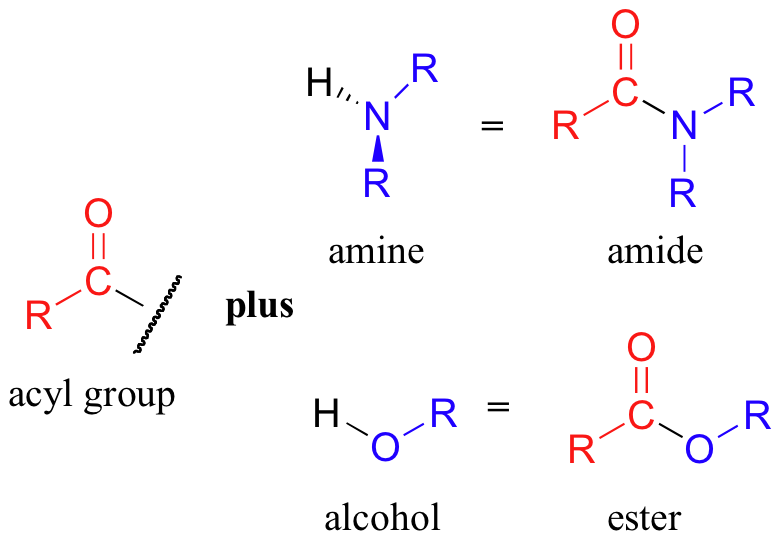
Carboxylic acid derivatives and acyl groups
 المؤلف:
..................
المؤلف:
..................
 المصدر:
LibreTexts Project
المصدر:
LibreTexts Project
 الجزء والصفحة:
.................
الجزء والصفحة:
.................
 30-10-2019
30-10-2019
 2848
2848
Carboxylic acid derivatives and acyl groups
The functional groups that undergo nucleophilic acyl substitutions are called carboxylic acid derivatives: these include carboxylic acids themselves, carboxylates (deprotonated carboxylic acids), amides, esters, thioesters, and acyl phosphates. Two more examples of carboxylic acid derivatives which are less biologically relevant but important in laboratory synthesis are carboxylic acid anyhydrides and acid chlorides.

The carboxylic acid derivatives can be distinguished from aldehydes and ketones by the presence of a group containing an electronegative heteroatom - usually oxygen, nitrogen, or sulfur – bonded directly to the carbonyl carbon. You can think of a carboxylic acid derivative as having two sides. One side is the carbonyl group and the attached alkyl group: this is called an acyl group (in the specific case where R is a methyl group, the term acetyl group is used). One the other side is the heteroatom-containing group: in this text, we will sometimes refer to this component as the ‘acyl X' group (this, however, is not a standard term in organic chemistry).

Notice that the acyl X groups are simply deprotonated forms of other functional groups: in an amide, for example, the acyl X group is an amine, while in an ester the acyl X group is an alcohol.

 الاكثر قراءة في مواضيع عامة في الكيمياء العضوية
الاكثر قراءة في مواضيع عامة في الكيمياء العضوية
 اخر الاخبار
اخر الاخبار
اخبار العتبة العباسية المقدسة


